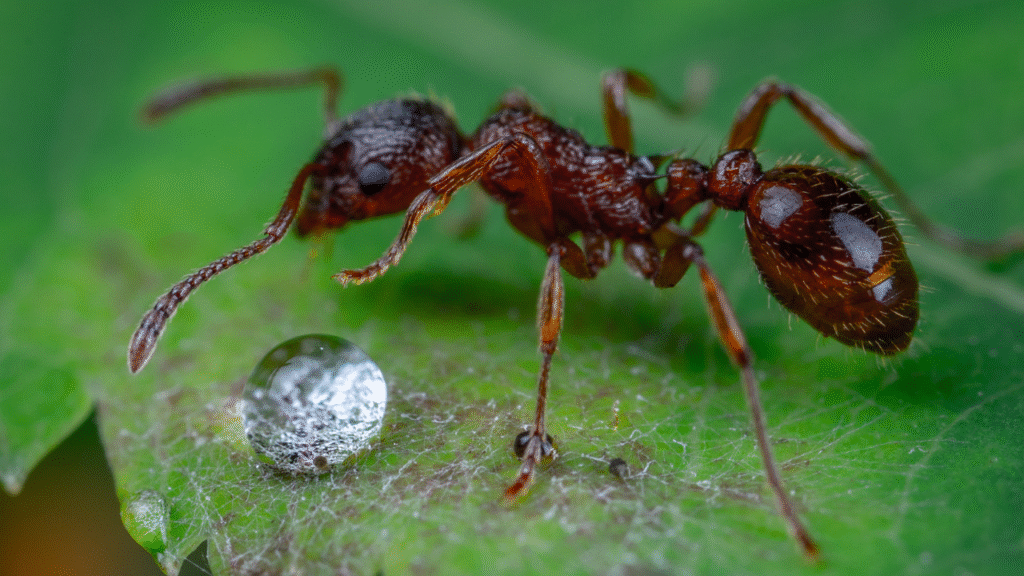The Secret Life of Ants: An Introduction
When you spot a line of ants marching across the sidewalk, you might not give them much thought. But hidden beneath your feet, behind walls, or within the bark of trees, lies a world of remarkable complexity. Ants are among the most successful creatures on Earth, and their secret lives reveal systems of cooperation, warfare, farming, and even architecture that rival human ingenuity.

Ancient Origins and Global Success
Ants have existed for over 100 million years, evolving from wasp-like ancestors during the age of the dinosaurs. Today, there are more than 12,000 known species, with estimates suggesting that the real number could be double that. They thrive on every continent except Antarctica, in environments ranging from rainforests to deserts.
Their success is largely due to their social organization. Ants live in colonies that can range from a few dozen individuals to supercolonies of millions. These colonies operate as a single entity, with different ants performing specific roles to support the whole.
The Castes of the Colony
An ant colony is often made up of three main castes:
- The Queen: Her primary role is reproduction. Some colonies have just one queen, while others may have several.
- Workers: These are sterile females who take care of the queen’s eggs, gather food, maintain the nest, and defend the colony.
- Males (Drones): Their only role is to mate with the queen. After this task is done, they die shortly after.
This division of labor ensures efficiency. While the queen focuses on laying eggs, the workers manage everything else with near-perfect coordination.
Communication Without Words
Ants don’t speak, but they communicate constantly using chemicals called pheromones. These invisible signals help them:
- Mark trails to food sources
- Signal danger
- Identify members of their colony
- Coordinate group tasks
For example, when a worker ant finds food, it lays a pheromone trail on the way back to the nest. Other ants follow the trail and reinforce it, leading to a rush of workers to the source.
Underground Cities and Ingenious Architecture
Some ant nests are incredibly complex, with networks of tunnels, chambers, and ventilation systems. Leafcutter ants, for instance, build nests that can span hundreds of square meters underground. Each section serves a different purpose—nurseries for larvae, fungus gardens for food, and trash chambers to store waste.
Weaver ants, meanwhile, create nests by stitching leaves together using silk produced by their larvae—a living example of biological engineering.
Cooperation and Conflict
Ant colonies are models of teamwork, but that doesn’t mean they live in peace with others. Some species engage in brutal warfare, raiding neighboring colonies, stealing larvae, and taking slaves. Army ants form living bridges with their bodies, swarming through forests in coordinated attacks on prey.
Yet, ants also display remarkable cooperation. Argentine ants form “supercolonies” stretching across entire regions where millions of individuals act as a unified organism—without internal conflict.
Ecosystem Engineers
Ants play a critical role in their environments. They:
- Aerate soil through tunneling
- Disperse seeds, helping plants grow
- Decompose dead animals and plant material
- Control pest populations
Without ants, many ecosystems would collapse. Their influence is far greater than their size suggests.
What We Can Learn
Scientists study ants not only to understand nature but also to inspire innovations. Ant colony behavior has influenced algorithms for traffic control, robotics, and problem-solving in computing. Their ability to self-organize without a leader challenges how we think about intelligence and cooperation.
Conclusion
The secret life of ants is a tale of unseen civilizations beneath our feet—filled with drama, discipline, and astonishing organization. They are not just insects; they are engineers, farmers, soldiers, and caretakers, living in societies that have stood the test of time.
So next time you see a single ant on the pavement, remember: you’re only seeing the tip of the iceberg.








